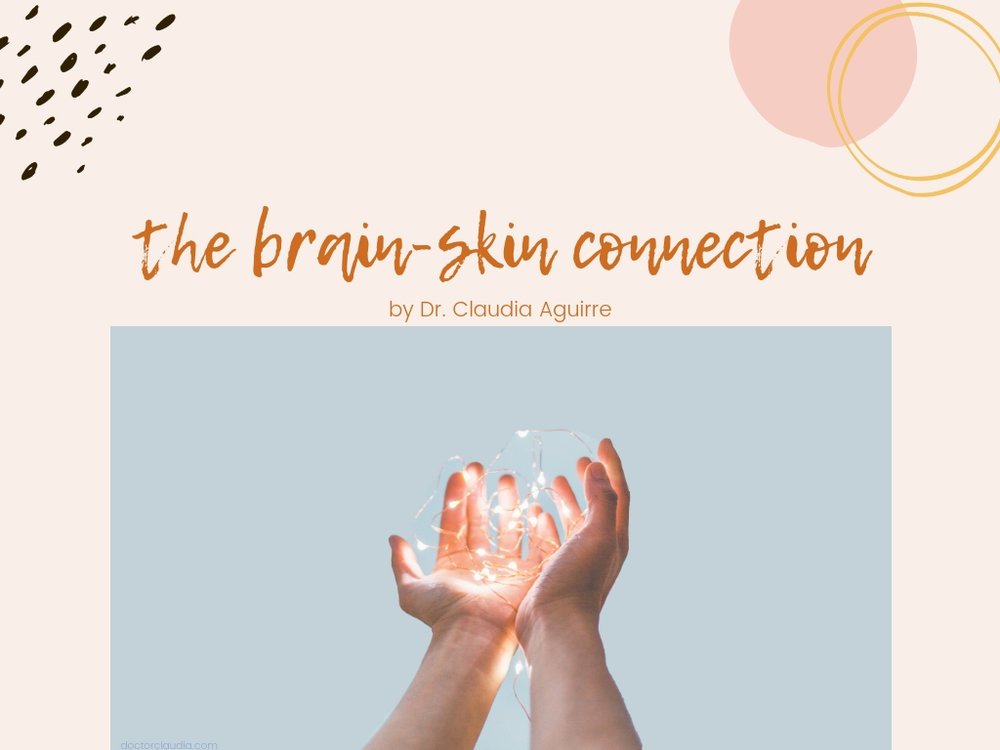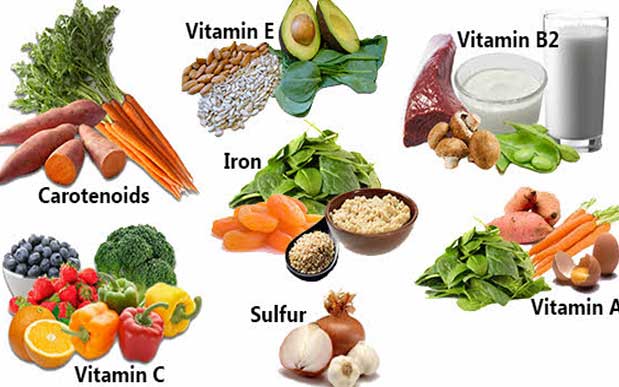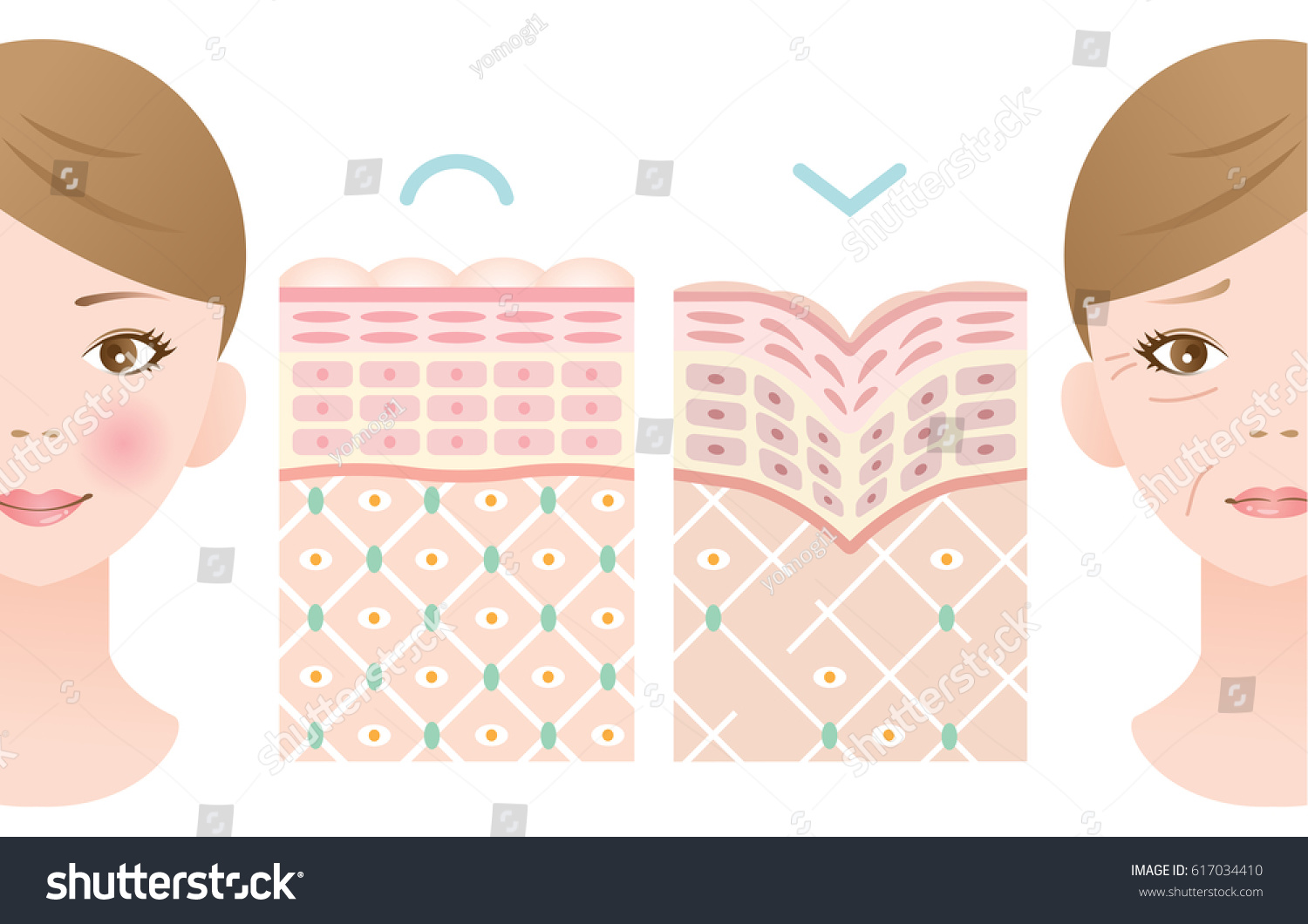Thursday 30 September 2021
Wednesday 25 August 2021
Impact of environmental stressors on skin aging- Review Article
Environmental Stressors on Skin Aging. Mechanistic Insights- Review Article
The skin is the first defensive barrier of our body being in contact with the environment.These stressors, combined with internal factors, are responsible for cutaneous aging. Furthermore, they negatively affect the skin and increase the risk of cutaneous diseases, particularly skin cancer. This review addresses the impact of environmental stressors on skin aging, especially those related to general and specific external factors (lifestyle, occupation, pollutants, and light exposure).
For more information click the link -
https://www.frontiersin.org/articles/10.3389/fphar.2019.00759/full
Friday 20 August 2021
Brain & skin connection- Review paper
“Brain-Skin Connection”
This review focused- what are the major pathways and effector cells; how they negatively affect skin functions and diseases; and how chronic stress can have a detrimental effect on skin aging.
How brain and skin communicate with each other, how the skin reacts to the stress by activating the endocrine and immune systems, and the negative impact of chronic stress on skin health.

click the link for more information
Monday 16 August 2021
Food for Healthy skin
Food for Skin
"Your skin is a reflection of your underlying health, so good nutrition, getting enough sleep, reducing stress, staying hydrated, etc., all play a role in creating better-looking skin"

1] Antioxidant
- Vitamin A- carrots, pumpkin, sweet potatoes, butternut squash, mangoes, spinach, tomato-vegetable juice.
- Vitamin C- orange juice, grapefruit juice, papayas, strawberries, kiwis, red and green peppers, tomato-vegetable juice, broccoli, mangoes, oranges, Brussels sprouts, grapefruit, cauliflower, and kale.
- Viatamin E- vegetable oils, nuts, seeds, olives, spinach, and asparagus
2] Omega-3 fatty acids-
- Fish, ground flaxseed, walnuts, and brands of eggs that are higher in omega-3sfish may help to guard against sun damage
- Monounsaturated fats - olive oil, canola oil, almond oil, avocados, olives, almonds
https://www.webmd.com/skin-problems-and-treatments/acne/features/skin-foods
Wednesday 28 July 2021
Skin types
Skin Types
There are four basic dichotomies or parameters that have recently been introduced in the Baumann Skin Type Indicator (BSTI) that more accurately characterize skin types.
This article describes the four parameters that make up the BSTI, focusing on basic science and defining characteristics and summarizing the 16 skin-type variations.
Article- Click the given link for more information.
https://www.researchgate.net/publication/5300732_Understanding_and_Treatin
Friday 4 June 2021
Thursday 3 June 2021
Nutraceuticals
Nutraceuticals
Nutraceuticals is a broad umbrella term that is used to describe any product derived from food sources with extra health benefits in addition to the basic nutritional value found in foods. They can be considered non-specific biological therapies used to promote general well-being, control symptoms and prevent malignant processes.
The term “nutraceutical” combines two words – “nutrient” (a nourishing food component) and “pharmaceutical” (a medical drug). The name was coined in 1989 by Stephen De Felice, founder and chairman of the Foundation for Innovation in Medicine, an American organization located in Cranford, New Jersey.
Categories of nutraceuticals
The definition of nutraceuticals and related products generally depends on the source. They can be classified on the basis of their natural sources, pharmacological conditions, as well as chemical constitution of the products. Most often they are grouped in the following categories: dietary supplements, functional food, medicinal food, farmaceuticals.
A dietary supplement represents a product that contains nutrients derived from food products, and is often concentrated in liquid, capsule, powder or pill form. Although dietary supplements are regulated by the FDA as foods, their regulation differs from drugs and other foods.
Dietary supplements, such as the vitamin B supplement shown above, are typically sold in pill form.
In the United States, the Dietary Supplement Health and Education Act (DSHEA) of 1994 defined the term: “A dietary supplement is a product taken by mouth that contains a "dietary ingredient" intended to supplement the diet. The "dietary ingredients" in these products may include: vitamins, minerals, herbs or other botanicals, amino acids, and substances such as enzymes, organ tissues, glandulars, and metabolites. Dietary supplements can also be extracts or concentrates, and may be found in many forms such as tablets, capsules, softgels, gelcaps, liquids, or powders.”
In an article written in the Functional Food in Health and Disease Journal it was seen that mitochondrial function was enhanced when subjects used various natural supplements most notably lipid Replacement Therapy (LRT). In multiple clinical studies on chronic fatigue syndrome, fibromyalgia, and other fatiguing illnesses where a majority of patients have chronic infections LRT reduced fatigue by 35-43%.
Dietary supplements do not have to be approved by the U.S. Food and Drug Administration (FDA) before marketing, but companies must register their manufacturing facilities with the FDA and follow current good manufacturing practices (cGMPs). With a few well-defined exceptions, dietary supplements may only be marketed to support the structure or function of the body, and may not claim to treat a disease or condition, and must include a label that says: “These statements have not been evaluated by the Food and Drug Administration. This product is not intended to diagnose, treat, cure, or prevent any disease.” The exceptions are when the FDA has reviewed and approved a health claim. In those situations the FDA also stipulates the exact wording allowed.
Functional foods are fortified or enriched during processing and then marketed as providing some benefit to consumers. Sometimes, additional complementary nutrients are added, such as vitamin D to milk.
Health Canada defines functional foods as “ordinary food that has components or ingredients added to give it a specific medical or physiological benefit, other than a purely nutritional effect.” In Japan, all functional foods must meet three established requirements: foods should be (1) present in their naturally occurring form, rather than a capsule, tablet, or powder; (2) consumed in the diet as often as daily; and (3) should regulate a biological process in hopes of preventing or controlling disease.

Wednesday 2 June 2021
Vitis vinifera - Grapes (Draksha) - (Review Paper)
Grapes (Draksha)- A Review

Abstract
Grapes are said to be the oldest cultivated fruit.It is used in Ayurvedic&Unani treatment &
shows numerous biological activities. The potential health benefits of consuming grapes are
numerous. Grapes also have some special components that make them more beneficial to
our health, giving them “super food” status. Grapes contain powerful antioxidants known as
polyphenols, which may slow or prevent many types of cancer, including oesophageal, lung,
mouth, pharynx, endometrial, pancreatic, and prostate and colon.They are also good source
of bioflavonoids. Vitisvinifera has more varieties.It is seen that it is useful in prevention of
cancer, heart disease, high blood pressure and constipation. Grapes are high in water content
and good for hydration.Many studies have shown that increasing consumption of plant foods
like grapes decreases the risk of obesityand overall mortality. This review provides Ayurvedic
history, varieties, profiling, nutritional values, pharmacological review& side effects of Draksha
(grapes).
Keywords- Grapes (Draksha), Nutritional values, Chemical profiling.
Introduction -
Vitisvinifera commonly known as grapes, angur /dakh, is from Vitaceae family.
Grapes are natives of Western Asia and Central Europe.Grapes were found in Egyptian tombs
and in the tombs of pre-Christ era as well.East, are botanically known as ‘vitisvinifera’. This
species has more than 10,000 varieties.In 1700, the Spanish introduced grape cultivation to
California.It is a large deciduous climber having upto 35 cm long stem, leaves are orbicularcordate,
palmately 5or 7 lobed, irregularly toothed. Flowers are green in colour. Berries variable
in size, ovoid to globose& greenish, purplish or bluish black edible, generally sweet. Seeds
2, 4 pear shaped.In India though a large number of types have been introduced & cultivated
experimentally or otherwise to a greater or lesser extent at different times & places ,only a
few of them are commercially successful.
Cultivation- Grapes are propagated from cuttings, field-budding or grafting to resistant
rootstocks.
Propagation
Seed - best sown in a cold frame as soon as it is ripe. Six weeks cold stratification
improves the germination rate, and so stored seed is best sown in a cold frame as soon as it
is obtained. In India Grape is mostly propagated by hardwood stem cuttings.
References of Draksha have been mentioned in Vedic period e.g. PaniniyaGanapath,
Shankhalikhitdharmasutra,PatanjalMahabhashya. It is also mentioned along with many
other plants by Charaka & Sushruta in their early medical treatise in the first century A.D.
CharakaSamhita is the oldest & most comprehensive text available. Medicinal plants
mentioned in it many centuries ago are recorded with complete understanding of various
dimensions reflected to their usage.It is the drug of PhalaVarga.Its synonyms are Kashmirika
(grows in high altitude of Northen Region), Gucchaphala (fruits appear in bunches), Gostani
(shape is like cow’s teat), Brimhani(it promotes body), Madhurasa, Svaduphala, Guda,
Sadvi(fruits are sweet), Shramaphala(allays fatigue), Yakshmaghni (allays consumption).
It has Madhur (sweet ) taste (rasa), Sheet (cold) potency (veerya), Madhur (sweet) vipaka
(intestinal digestion and tissue metabolism), Snigdh (unctuousness) attributes., vata–pitta
shaman (alleviate vata& pitta). It is used for ahariya&aushadhikalpana(medicinal formulations).
In Ayurvedic CharakaSamhita total 162 references of Draksha are mentioned. It is the first
drug of KasaharDashemani, also mentioned in Kanthya, Snehopag, Virechanopag, Jwarhar,
ShramaharGana& in MadhurSkandha. Of which Draksha shows Virechana (purgative),
Kanthya(beneficial for throat),Snehopag(sub oleative), Virechanopag(sub purgative), Kasahar(anti
cough or antitussive), Jwarahara(anti pyretic), Shramahar(energy compensator) actions.
Total 21 Kalpanas i.e. Svarasa , Ghrit, Avaleha, Basti, Kwath , Ksheerpak,Gutika, Choorna,
Taila, Arishta, Kalka, Madya, Asav, Rag , Panak, Saktu, Mamsarasa,Sneh,Varti, Yush&Yavagu
mentioned.
In Unani medicine leaves of grapes useful in piles. Their juice cures headache, syphilis, piles,
inflammation of the spleen, diuretic allays vomiting, stops bleeding from the mouth, applied in
scabies, produces alopecia. The ashes of the stem are used in joint pain, stones in bladder, swelling of
testicles & piles, The flower are expectorant, emenogogue, enriches the blood, tonic to liver, good in
chronic bronchitis produces constipations. The fruit is sour sweet, digestive, stomachic, expectorant,
purifies & enriches the blood. The seeds are aphrodisiac, astringent to the bowels; their ash is applied to
diminish inflammation. The dried fruits are demulcent, laxative and useful in thirst. The sap of young
branches popular for skin diseases & is still a popular remedy in Europe for opthalmia.
Chemical composition
Grapes are rich in reducing sugars but poor in protein. They are a fair source of iron & minerals, tracesVitis vinifera
Red grapes appear to be richer in B –vitamins than white grapes. The vitamin content increases during
maturation except for biotin which decreases
Fruit- Reducing sugar , poor in protein, Bromide, Iodide, Fluoride,Vit.C, Bioflavonoids (Vit P)
Enzymes – berries contain invertase, Carbohydrates, Nitrogen compounds[4]Organic acid - Tartaric
acid & Malic acid (in large amount), Citric acid(small amount) Phenolic compounds – pigments &
tannin.
Leaves, Bark, Roots, & in Berries - Glucose, fructose, sucrose, maltose, of VitisVinifera L. Var.
melibiose, raffinose, stachyose, Malic, Thompson seedless.[4] tartaric, citric, isocitric, ascorbic, cis-
aconitic, oxalic, glycolic, glyoxylic, succinic, lactic, glutaric, fumaric, pyrrolidone carboxylic, á-
ketoglutaric, pyruvic, oxaloacetic, galacturonic, glucuronic, shikimic, quinic, chlorogenic, and caffeic
acids
Review of pharmacological activities of useful parts of Grape
1] Anti-inflammatory –(fruits, leaves & juice)
Alcoholic extract of fruit, leaves & juice ofVitisvinifera L. have significant anti-inflammatory
activity. The anti-inflammatory activity of Vitisvinifera L. may be attributed to the presence of
high content of flavonoids viz, quercetin, rutin, kaempferol, and luteolin in addition to phenolic
acids and â-sitosterol which are all reported to have anti inflammatory effect.
2] Action on chloasma – (Grape seed extract)
Chloasma (melasma), an acquired hypermelanosis, is often recalcitrant to various treatments
and an amenableas. The reducing effect of proanthocyanidin, a powerful antioxidant, on
chloasma in a one-year open design study.Proanthocyanidin-rich grape seed extract (GSE)
was orally administered. GSE is effective in reducing the hyper pigmentation with chlosma. .
3] Anticancer activity- (grape skin and seed extracts)
The use of grape antioxidants are promising against a broad range of cancer cells by targeting
epidermal growth factor receptor (EGFR) and its downstream pathways, inhibiting overexpression
of COX-2 and prostaglandin E2 receptors, or modifying estrogen receptor pathways,
resulting in cell cycle arrest and apoptosis. A natural product, resveratrol (3, 4, 40-
trihydroxy-trans-stilbene), a phytoalexin found in grapes and other food products, is known
as a cancer chemopreventive agent. ,Resveratrol inhibits proliferation and induces
differentiation of myeloid leukemia cells. The mixture of Terminaliachebula, grape juice
and sugar cane juice has been used. Resveratrol, a natural product derivative from grape
juice has been proved to possess cancerchemopreventive activity
4] Cardioprotective activity – (grape seed& extracts)
Animal study (Normal Wistar strain rats were pretreated with Vitisviniferaseed (500mg/kg
body weight) for 28 days) intoxicated with isoproterenol (ISO). The potential cardioprotective
activityof Vitisvinifera may be due to the presence of therapeutic phytochemicals such as
proanthocyanidins and natural polyphenolic. The active components from grape extracts
have polyphenols such as resveratrol, phenolic acids, anthocyanins, and flavonoids. All possess
potent antioxidant properties. Consumption of grape and grape extracts or grape products
may be beneficial in preventing the development of chronic degenerative diseases such as
cardiovascular disease.
5] Effect of Grape (Vitisvinifera L.) Seed on Reducing Serum
(Uric Acid Level in Gout-Animals Model)
The effect of grape seed greater on lowering uric acid level in gout-animals models than in
control group. Additionally GS can be lowering serum urate level in hyperuricemic. GS may
therefore prevent against gouty and inflammatory.
6] Antibacterial, Antifungal, antiviral, Antioxidant activities – (leaves – Chloroform
fraction) Fractions shows action against gram-positive (S. aureusand E. faecalis) than against
gramnegative bacteria (E. coli and P. aeruginosa). Antifungal activity against the genus Candida
(C. albicansand C. parapsilosis).
7] Antibacterial activity (Vitisrotundifolia- seeds)
Antimicrobial activity of different variety of grape seed extract was checked against bacterial
species. Polyphenols are the main antimicrobial compounds of the plant. Grapes have a rich
source of this molecule.High antibacterial activity was found with a fraction that contains
oligomeric units of catechins& epicatechins. The same antibacterial effects were obtained
against strains of Escheria coli, Staphylococcus aureus(methicillin-resistant staphylococcus
aureus) the bacterial implicated in oral diseases (streptococcus mutans,
porphyromonasgingivalis&Fusobacteriumnucleatum) & Helicobacter pylori.
8] Anti –oxidant activity - (seed extract)
The extracts evaluated by B- Caritene – linoleate model & linoleic acid peroxidation mehod.
[10]By potassium ferricynide reduction method, this extract shows good reducing power at
500 mg/ml concentration. It was found that acetone:water:acetic acid (90:9.5:0.5) extract
was better radical scavenger than methanol:water:acetic acid (90:9.5:0.5) extract. The
presence of enriched phenolic and flavonoid compounds act as antioxidants.
9] Anti-histaminic, Anti-microbial, Anti-malignant, Laxative-
It shows anti-histaminic, anti- asthmatic, expectorant and mass cell stabilising properties. It
can be used as effective anti-allergic agents against the respiratory allergic disorders. Moreover
herbal drugs provide better options to prepare formulations on the basis of their pharmacological
actions. Their role as immunemodulator agents is equally important in limiting repeated
respiratory allergies and potentiating the respiratory system.
10] Hepatoprotective – (leaves)
Hepatoprotective effect of ethanolic extract and its four different fractions were investigated
against carbon tetrachloride (CCl4)-induced acute hepatotoxicity in rats.n-BuOH fraction in
83 mg/kg dose shows antioxidant and hepatoprotective activities.
11] Antihypertensive –(Grape skin extract (GSE))
An alcohol-free hydroalcoholic grape skin extract (GSE) obtained from skins of a vinifera
grape (Vitislabrusca) in experimental rodent hypertension models. The antioxidant effect
seen on lipid peroxidation of hepatic microsomes and the vasodilator effect of GSE assessed
in the isolated mesenteric vascular bed of Wistar rats. The antihypertensive effect of GSE
might be owing to a combination of vasodilator and antioxidant actions of GSE. [
12] Antiulcer Activity – (Grape Seed Extract and Procyanidins)
Antiulcer activities of grape seed extracts and procyanidinsinvestigated using rats. The gastric
protective activity of a series of procyanidins increased with the increasing polymerization of
catechin units. The mechanism of antiulcer activity may be the protection by radical scavenging
activity on the stomach surface against radical injury induced by HCl/EtOH solution and the
defense action of procyanidins covering the stomach surface by their strong ability to bind
protein.Oligomers longer than tetramers showed a strong protective effect against gastric
mucosal damage.
13] Bronchodialator – (leaf hydroalcoholic extract)
Grape leaf hydroalcoholic extract on isolated rat tracheal contractions induced by KCl and
acetylcholine. The grape leaf extract at 0.5, 1, 2, 4 and 8 mg/ml significantly reduces the
tracheal contractions induced by KCl.extract effects occur on the smooth muscle cell
membrane. Grape leaf hydroalcoholic extract inhibits the rat tracheal contractions induced
by KCl and acetylcholine via blocking the voltage dependent calcium channels (VDCC) on
the smooth muscle cells membrane.
14] Wound healing activity - The oil of grape and cranberry
The oil of grape and cranberry has wound healing activity. An excision wound model in rats
used for study.The controls were treated with petroleum jelly. The standard group of animals
were treated with mupirocin ointment. The hydroxyproline content of the granulation tissue
was significantly higher in the animals treated with cranberry and the grape-oil.
Thus grapes due to their high nutrient content play an important role in ensuring a healthy &
active life. The whole fruit, skin, leaves & seed of grape plant used as medicine. It contains
flavonoids that are very powerful antioxidants, which can reduce the damage caused by free
radicals.




